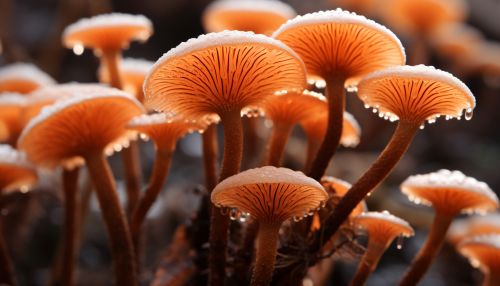Aspergillaceae
Taxonomy and Classification
The Aspergillaceae is a family of fungi within the order Eurotiales. This family is characterized by its diverse array of species, many of which have significant impacts on human life. The family is named after its most famous genus, Aspergillus, which includes species known for their importance in industrial microbiology and human health.


Characteristics
Members of the Aspergillaceae family are typically filamentous fungi, forming a network of hyphae that can grow on a variety of substrates. They are known for their ability to produce large amounts of spores, which are often carried by the wind and can colonize new environments rapidly. These fungi are also known for their metabolic diversity, being able to degrade a wide range of organic compounds.
Genera
The Aspergillaceae family includes several genera, the most notable of which are Aspergillus and Penicillium. Other genera in this family include Emericella, Eurotium, and Neosartorya, among others. Each of these genera has its own unique characteristics and species diversity.
Ecology and Distribution
Aspergillaceae fungi are ubiquitous in nature, found in a variety of environments from soil to air. They play crucial roles in nutrient cycling, particularly in the decomposition of organic matter. Some species are also known to form symbiotic relationships with plants, aiding in nutrient uptake.
Economic and Health Impact
Several species within the Aspergillaceae family have significant economic and health impacts. For instance, Aspergillus species are used in the production of various fermented foods and beverages, as well as in the production of industrial enzymes and organic acids. On the other hand, certain species are known to produce mycotoxins, which can be harmful to humans and animals. Additionally, some Aspergillus species can cause aspergillosis, a group of diseases that can range from allergic reactions to life-threatening systemic infections.
Research and Future Directions
Research on Aspergillaceae fungi continues to uncover new species and deepen our understanding of their biology and ecology. Future directions in this field include the exploration of their genetic diversity, the development of new industrial applications, and the management of their impacts on human health.
See Also
- Mycology - the study of fungi
- Eurotiales - the order to which Aspergillaceae belongs
- Fermentation - a process used in food production, often involving Aspergillus
